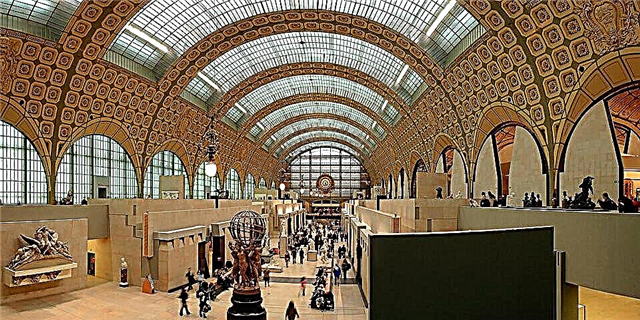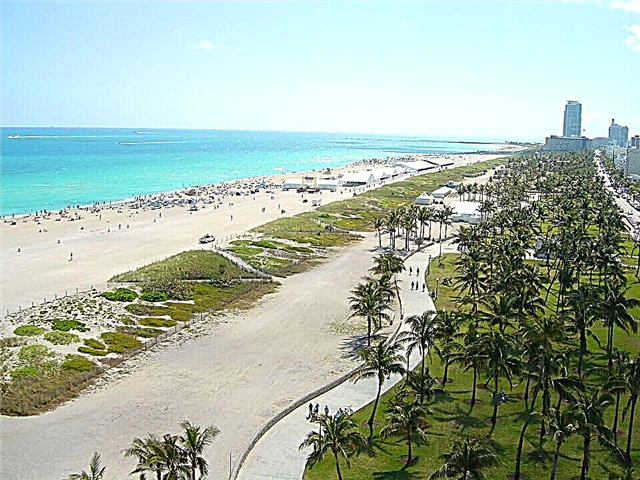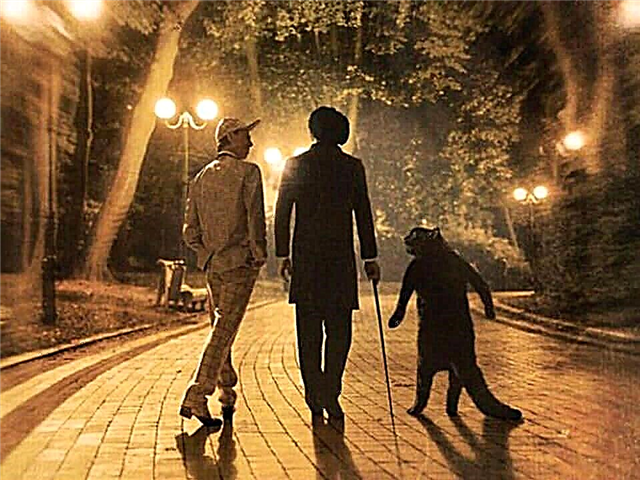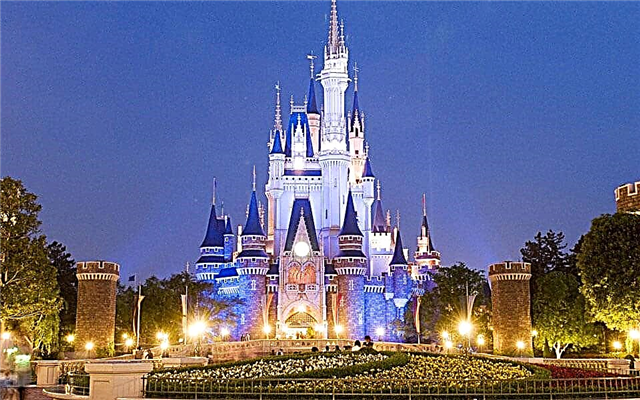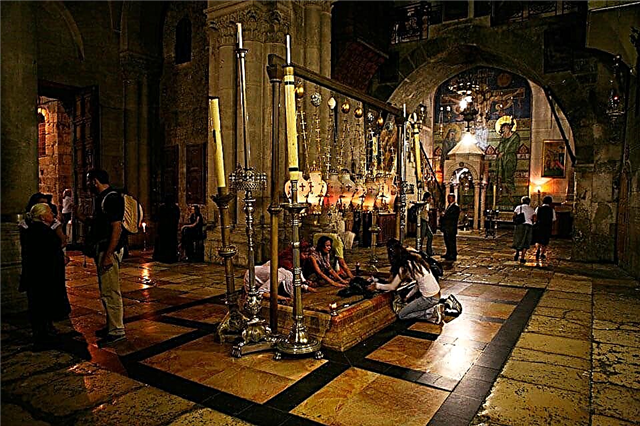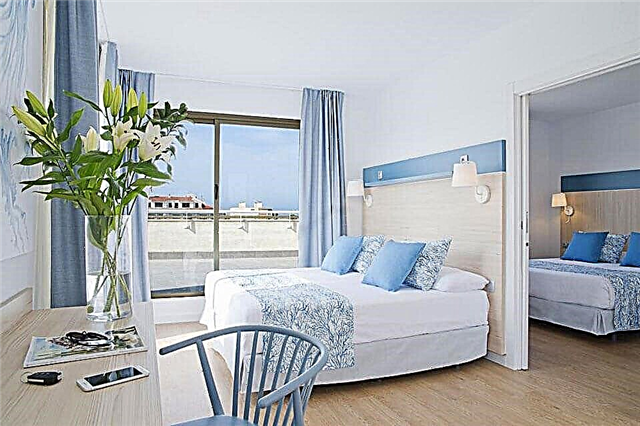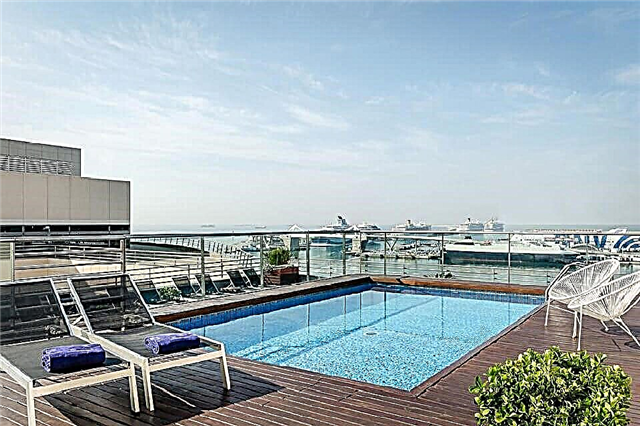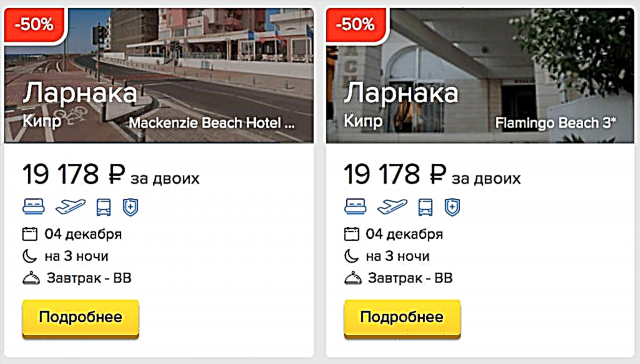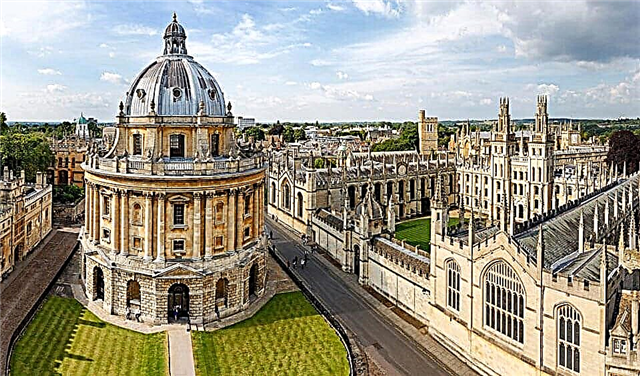The city, describing which dozens of symbolic places come to mind, becomes the dream of many people from school, when they study detective stories about Sherlock Holmes and watch historical films with prim Englishmen wandering the foggy streets of medieval England. But when they first visit London, it also opens up from a different perspective: futuristic skyscrapers, flea markets, youth pubs and contemporary art blend harmoniously with first-class restaurants, royal palaces and luxury luxury hotels and shops. How to make it and what to see in London in 2 days, so as not to regret a missed opportunity later, we will tell you below.
How to get from the airport to the center
The center can be reached by bus, metro, train and taxi. The train is the fastest way, as it will take you 40 minutes. The cost of such a trip is £ 22. To do this, you need to get to the platform from which Heathrow Express or Heathrow Connect departs every 15-35 minutes. Opening hours: 05:07 - 23:48.
The fastest but most expensive trip is by taxi. Just 5 minutes walk to the point where taxi drivers offer services, and in an hour you will be at your destination. The cost of a trip is 116 euros by car, and 274 euros by minibus, the price of which can be divided into 7 passengers.
By bus, your journey can take almost 2 hours: first you need to get to the Victoria bus stop (15 minutes), then wait 20-30 minutes for the National Express bus itself, and spend another hour on the road. But the ticket price pleases - 6 euros. Opening hours: 05:30 - 23:30, break: 21:40 - 23:30.
Therefore, the metro is the most convenient way to travel around any city if you know how to navigate in it. It runs every 5 minutes. You need to get to the entrance - it will take about 10 minutes, then find the "Piccadilly" line and in an hour you are there. The ticket price is 5.7 euros, they are purchased at the station from vending machines. Working hours: 05:00 - 00:00.
First day
The main sights of the city are concentrated in one place and if you want to shorten the path, then you should definitely not move with the help of transport. Literally at every step there is a museum or an iconic historical building, which you will surely have time to get around in one day if you follow the order of visiting described below.
Big Ben

The history of the tower of Westminster Palace began in the 13th century, but several centuries later it was destroyed in a fire. The design of the recognizable symbol as we see it today was developed by Charles Berry, in collaboration with Augustus Pugen, already in the 19th century. At one time, they noted that this project turned out to be the most difficult for the entire time of their construction career. It was not so easy to erect five-ton dials to a height of 55 meters at that time, but the diligence of the builders and the development of architects was worth it: after a few years, even the German bombardment could not stop the clockwork.
According to one version, the tower is named after the construction manager. Today Big Ben is the international standard of time, and tourists can hear their chiming every hour - this is the world's only four-sided chiming clock. Unfortunately, it is rarely possible to inspect them from the inside - there is no elevator inside, and not everyone can overcome the 334 steps.
Westminster Abbey
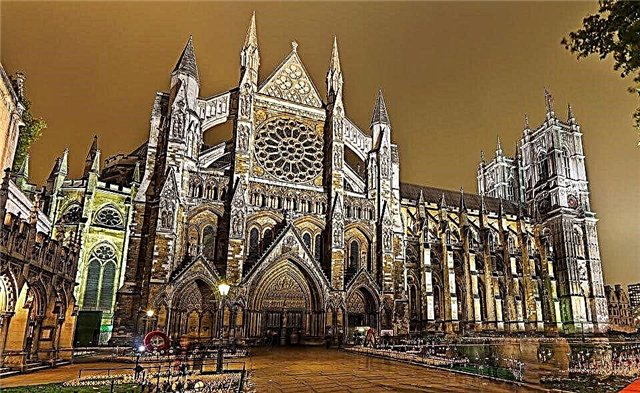
One of the largest churches of St. Peter in the city is closely related to the history of royal families and first appeared on the banks of the River Thames in medieval times. At first, the temple was erected from wood, later from stone, and at the end of the 11th century, the royal nobility first noticed the building in the form of a cross and turned it into a place for the coronation of monarchs, adding galleries and chapels over time.
Since then, the church has been constantly transformed and the last modification appeared in the 18th century, when two columns with a height of 70 meters were added to it. The religious complex is divided into several rooms: the Tomb of the Monarchs, the Chapel of Henry VII, the Chapel of Edward the Confessor, the Chapter Hall, the Poets' Corner.
Curious and chilling legends are associated with each hall. For example, the Chapter Hall, which once served as the treasury of kings, witnessed a cruel reprisal against a London merchant who got into the habit of stealing wealth and transferring it to the devil himself. He was skinned alive and chained to the door of the treasury. These and other secrets of Westminster will not let the excursion turn into something boring and will be remembered for a lifetime.
Buckingham Palace

The royal estate was founded in the 18th century by one of the dukes of England, but he did not like the result, so the building was transferred to the hands of George III. It took almost 80 years for the architects to work on the palace to satisfy the tastes of the royal family. In 1837, Queen Victoria ascended the throne here and declared Buckingham Palace the official residence.
She was actively involved in rebuilding the interior rooms, and only 20 years later, the ballroom became worthy of holding royal festive evenings. There are 775 rooms in the palace, and only 19 of them are available for excursions from August to October: the ballroom, reception room, throne room, guest room, art galleries and rooms named after the predominance of one color or another in them - green, blue, white room and so on (there are rare antiques, antique furniture and paintings), as well as gardens with waterfalls, fountains and completely calm flamingos, which are not in the least afraid of the crowd of people.
It is especially exciting for tourists to wander through the royal halls and realize that somewhere in the other end of the palace the royal family of Great Britain lives and conducts its state affairs. An unpleasant disappointment is the ban on photography, in return for which only postcards with the interior of the palace are offered at the exit.
Trafalgar Square
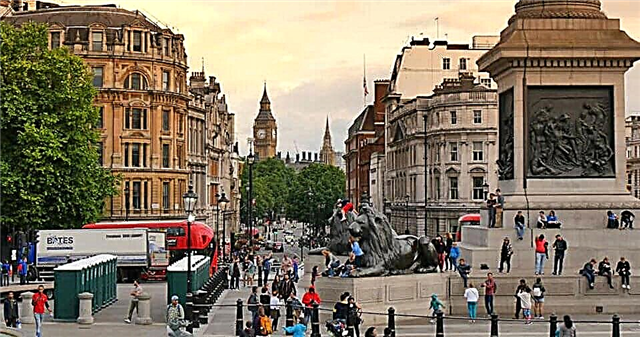
In the very center, in the 19th century, a square appeared, where city events and holidays are now held, and earlier it was an abandoned wasteland with a poultry house and stables. The well-known Charles Berry once again took a hand in its ennobling, under whose leadership a forty-meter statue of Horatio Nelson from granite rose above the square, surrounded by bronze lions and fountains on a pedestal with frescoes that convey memorable battles in which the British commander participated.
He died heroically in the battle at Cape Trafalgar, having managed to defeat the French without a single loss to his fleet. In addition to it, the square is decorated with pedestals and other prominent personalities of England - King George IV, Charles I, generals C. Napiru and G. Havelock, artist E. Lapper. This place is located at the intersection of the main streets of the city and it is simply impossible to miss it.
National Gallery

The life of the gallery began in the 19th century when the government bought out the first collection of paintings from one of the London bankers - these were the works of Titian, Lorrain and other painters. Gradually, the gallery fund increased at the expense of local patrons and grew to such a size that the question arose of opening a more spacious building. It turned out to be a monumental building with columns and domes near Trafalgar Square. The opening of one of the halls was attended by Elizabeth II herself, who was not stingy to present canvases to the public from her personal collection.
Today, the National Gallery has more than 2000 works, distributed in chronological order into 4 wings, from the 13th century to the 20th century: Francesca, Botticelli, da Vinci, Bosch, Rubens, Turner, Russo, Renoir and others.You need to see the real masterpieces of world art with your own eyes at least once in your life, but here you can also do it completely free of charge.
Leicester Square

The pedestrian street, which is also in central London, kicks off its entertainment activities at night, attracting crowds of young people on weekends. During the day they come here for souvenir products and sometimes get on impromptu street shows, but in the evening more grandiose theatrical performances are held, bars, cinemas, cabarets, casinos, nightclubs and restaurants open. But once the noisy bright square belonged to the earls and was not accessible to the public, and only by the 18th century it turned into a center of trade, and then into a prestigious area for the London elite.
Coca-Cola London Eye ticket - £ 27
Harry Potter: Warner Brothers Studios Travel & Tour - £ 76.50
Tower of London and Royal Treasure Exhibition Ticket - £ 26.80
Madame Tussauds ticket - £ 29
Skyscraper "Shard" - entrance ticket and champagne - £ 27.20
St Paul's Cathedral Fast Track Ticket - £ 17
Tower Bridge tickets - £ 9.80
Hop-on hop-off bus tour - £ 34
Westminster Abbey entrance ticket and audio guide - £ 21
Stonehenge ticket - £ 19
Covent Garden

This drama theater glorified Great Britain all over the world and still holds its place in the five most professional and beautiful opera houses in the world. Its opening began in the 18th century with the production of the ballet Pygmalion, which was so successful that after it the leaders began to acquaint the public with other types and genres of performing arts: operas, musicals, vaudeville, etc.
All performances were accompanied by applause of enthusiastic spectators until the theater faced the first fire in the 19th century, and 50 years later with the second. The last reconstruction took place at the end of the 20th century in order to increase the seating capacity and now the four-level hall can accommodate 2 thousand spectators. In addition to attending performances, Covent Garden offers an excursion, during which you can look behind the scenes, into the royal box and even attend rehearsals.
Fleet Street

Once there were the leading British print media and editorial offices, but with the development of computer technology, the printing house has ceased to be in demand and has completely disappeared from the area. But some of the sights that have remained here from those times can still be seen - Temple Bar, which served as a barrier for two districts, St. and the oldest pub "Old Cheshire", decorated in the style of a medieval castle, a favorite resting place of Arthur Conan Doyle and Mark Twain.
St Paul's Cathedral

The largest church in England suffered constant destruction until the 18th century. The first mention of a wooden temple appeared in 604, which was built for the Anglo-Saxon king. After his death, the church burned four times and by the 14th century a Gothic cathedral appeared with a spire height of 15 meters and a building length of 180 meters. For a couple of centuries, the monumental building impressed the residents until a series of wars began, which finally destroyed the Cathedral.
The year 1711 marked the beginning of the life of the church in the baroque-classical style, which we see now - Christopher Wren completed the main part of the work and his main pride was the dome with a height of 111 meters. Along the walls of St. Paul's Cathedral, there are 67 statues of prominent personalities in England, from martyrs to military leaders. Today, the church serves not only as the residence of the bishop, but also as a burial vault for military leaders, artists, writers and other famous figures of England.
Shopping center One New Change

A few minutes walk from St. Paul's Cathedral there is an ultra-modern shopping center "One New Change", on three floors of which there are more than 70 world famous brand clothing stores - HUGO BOSS, Calvin Klein, GAP, LACOSTE, CONVERSE, Timberland, jewelry - Swarovski, Pandora, cosmetics - Chanel, Dior, etc.
Eyes also diverge when choosing a place for a snack, which includes both small atmospheric coffee shops with pastries and themed restaurants with gourmet dishes. But the main highlight of this shopping center is the opportunity to touch the dome of the Cathedral for free and take a memorable photo against its background from the terrace, from where a panoramic view of the city opens.
Leadenhall Market

Another noteworthy market is located in the center and, above all, is notable for the time of its foundation - around the 14th century. Even then, it was one of the main retail outlets in the city, and over time, the market only grew. In the late 19th century, it was decided by the local municipality to decorate Leadenhall with a glass roof, stained glass windows and English-style mosaics. The gallery, designed in the form of a gallery, attracted many producers and directors, whose filming in Leadenhall we saw in films about Harry Potter, the wizard Parnassus and other famous films, as well as clips from the Erasure group.
This place is famous for the quality of the products offered, so people come here for shoes, clothes, pens, cigars, elite alcohol and cheeses at attractive prices. After shopping, you can relax in one of the many restaurants that offer from Korean to European cuisines.
Sky Garden Observation Deck

This young garden park in a futuristic style was built in the very center of the City, a stone's throw from the following two attractions on the roof of a business skyscraper. For the owner of this building, a condition was set on the possibility of building a high-rise only if the roof was refined so that people could relax there and enjoy the sun and greenery.
As a result, all the walls and roof are flooded with sunlight, as they are made of glass, and the recreation area itself is the size of a stadium, reminiscent of airport lounges. There are cafes throughout the area, surrounded by palm trees and ferns, in the shade of which you can hide from the sun. The prices in restaurants are too high, but for the sake of the panorama of the city, opening from a height of 60 meters, it is worth overpaying. One of the most democratic places is called the Skypod cafeteria.
Tower of London

In the 11th century, a fortress with walls almost 5 meters thick was erected on the banks of the River Thames, which served as a royal residence, a zoo, an observatory and a treasury, but the darkest period during its existence was the time when the Tower was used to imprison criminals, which gave rise to the most incredible stories about ghosts wandering around the castle at nightfall. Even some scientists have succeeded in capturing on film moving clumps of fog in outlines similar to a human figure. At one time, Anne Boleyn was executed here, as well as several kings of Scotland and France.
At the entrance, tourists will be awaited by a flock of ravens and guards who work here not to create a historical atmosphere, but to guard the crown, scepter and other jewels of England, which can also be looked at. During the excursions, you will visit many exhibitions: "The Row of Kings" of the Stuart and Tudor dynasty, "Armor and Weapons", "Royal Animals", palace premises, St. Peter's Chapel, the Mint.
Tower Bridge
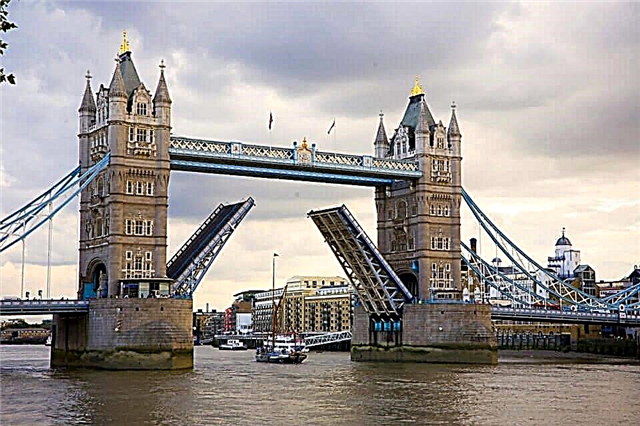
The 240-meter drawbridge was opened at the end of the 19th century and consists of two parts: when the lower one opens for the passage of ships, the upper one can still be crossed from one bank of the Thames to the other. Inside the side towers there is a museum, whose exhibitions are more devoted to the history of the creation of the bridge and steam engines, and between them, at a height of 40 meters above the water, there is a pedestrian gallery with a transparent floor and walls, overlooking London.
Borough Market

One of the oldest markets in the city has been used for its intended purpose for more than 1000 years, and if earlier the range of products was very modest, today there are delicacies for every taste from different parts of the world, from ostrich eggs to domestic eggplant caviar. Our tourists recommend visiting the department of cheeses, of which there are more than a hundred types, coffee shops with croissants, coconut pancakes, an oyster bar, chocolate makers, fish and meat restaurants. It is very clean and beautiful here, where, just like in Leadenhall, colorful counters with bright fruits and vegetables attract filmmakers.
Tate Modern

If you walk past an industrial-looking building, you might not guess that it houses one of the best museums of contemporary art in all of Europe. Once there was a power plant, but today unusual exhibits made of metal, wood and other materials amaze the imagination of an inexperienced viewer and fit into the general style of the building. In addition to unexpected installations, whose hidden meaning is not given to everyone to read, there are sculptures and paintings, posters, signs. However, their image is also made in the genre of avant-garde, surrealism, cubism and abstractionism. Among the 70 thousand works of art, you can find works by Picasso, Dali and Matisse.
Sea Life Aquarium

Only in 1997 did the townspeople have the opportunity to delight themselves with the secrets of the underwater world in the aquarium, which has become home to more than 400 species of marine life. Representatives of the marine fauna from the Indian and Atlantic Oceans live in 14 zones of the aquarium, among them there are both dangerous predatory sharks and piranhas, whose hunt can be observed, as well as nimble colorful coral fish, clown fish, jelly fish, robot fish, eared jellyfish, stingrays, and some of them (crabs, stingrays, starfish, penguins) can be touched in special pools designed for tactile contact with people.
For fans of extreme sports, you can go down to the shark under the water for 15 minutes, the rest can be content with the sight of swimming scuba divers together with predators through the glass. Educational excursions, performances with animals, games and contests are held for children.
London Eye Ferris Wheel

The most popular way to view the panorama of the city is a half-hour ride on a Ferris wheel from a height of 130 meters. It is the second highest in the world after Singapore. 32 egg-shaped capsules weighing 10 tons can hold 25 people each. One of them can be rented for lovers and ordered there service, champagne and snacks.
At the end of the rental, the installed camera in the cab will automatically take a picture with you and give you when you leave. The cost of this attraction includes watching a 4D film about the New Years and other festive events of the city, opening from the Ferris wheel, which captures them for a whole year.
After the first exhausting day, complete the evening in the Jerusalem Tavern for a traditional ale, in the historic Ye Olde Cheshire Cheese pub in a colorful medieval setting, or in a secret bar behind the refrigerator door - Call Me Mister Lucky.
Second day
The second day promises to be no less interesting and eventful. We dress comfortably, have a hearty breakfast, do not forget to charge the phone to take a million more beautiful and memorable photos.
Flea Market Portobello

The antiques market in West London began its activity in the 19th century, when, apart from a farm and a few buildings, there was nothing in the area. Over time, the area attracted local businessmen and they began to invest money here. Merchants flocked to Portobello hoping to get good returns from the constantly arriving new tenants and expected the area to flourish. And so it happened - after 50 years, medicines, high-quality furniture and second-hand household goods were sold here at low prices.
The fame of the market spread throughout the city and brand sellers also began to place their departments in Portobello. Today, order has been restored here, the territory has been divided into 3 zones: antiques, food and luxury goods. Tourists note that sometimes on the shelves you can find collectible editions of books, old cameras, dishes for ridiculous money. And some famous fashion houses send things to Portobello with the slightest marriage.
Victoria and Albert Museum

The largest museum of arts and crafts in the world, named after the royal people of England, has been collecting since the mid-19th century. More than 6 million exhibits (furniture, textiles, sculptures, ceramics, jewelry, photographs and paintings) from all over the world, related to different eras and peoples, are located in 145 galleries.
It is impossible to get around 16 exhibition halls in one or even two days, so it is better to immediately decide on the expositions you are interested in. Children will also be bored: everyone can try on a themed costume of a court lady or gentleman, take part in competitions, learn the art of photography, painting or origami. Some exhibitions have to be paid for, but general viewing rooms do not require entry fees.
Natural History Museum

Right at the entrance to the museum, visitors will be greeted by a dinosaur skeleton, impressive in its size, a sculpture of Charles Darwin and a giant sequoia, which is more than 1000 years old. Ahead are 4 zones about the secrets of our Earth with 70 million exhibits that will be of interest even to children. The red section is devoted to geology: volcanoes, floods, earthquakes and the origin of other natural disasters, some of which can be felt with the help of special “stimulants”.
In the Green section, everything is connected with the ecology of our planet, animals and plants: stuffed animals and skeletons of extinct animals, moving scorpions and crabs, the evolution of butterflies, photographs. The blue section is about dinosaurs, amphibians and fish, whose representatives can growl, blink and move. The last Orange section is dedicated to the Wildlife Garden and an exhibition of carnivorous plants and insects. Here you can also watch a 4D film on one of the themes of the expositions.
Hyde Park

Previously, it was an ordinary forest, then the royal hunting grounds, and Hyde Park became a refined recreation area for ordinary people only under the reign of Charles II. Then a lake was dug here and the Crystal Palace was built, but this landmark has not survived to our times. Now there are many fountains in the park, and the lake offers water activities and fishing. All around in greenery and flower beds, which attracts the British here for picnics.
In Hyde Park, you can visit the Art Gallery of Modern Masters, the Animal Cemetery, the residence of the Dukes of Wellington and an equestrian school. On Sundays, speakers from Londoners who are concerned about the city's political or cultural events can be heard at Orator's Corner. If you have something to add, you can participate too.
Grosvenor Square

The huge estate that is located near Grosvenor Square once belonged to the wealthy Grosvenor family, who were allowed to take a large plot of land for the construction of their estate, subject to the lease of the area and two streets around it. Now the square has been rebuilt and there is an American embassy and a church near it.
There are many trees, shrubs and flower beds, a Roosevelt monument and several memorials in honor of the Americans who died in World War II and the British who died in the September 11 terrorist attack. A small square in the English style, where you can relax for a couple of hours, on benches in the shade of trees.
The next 5 cultural sites are located in different parts of the city and represent huge complexes that will take at least half a day to see. Therefore, according to your interests, it is worth stopping at one of the university campuses, the royal castle or the mysterious Stohenge.
Greenwich

In the southeast in the 15th century, a "green village" appeared, where members of the royal family loved to relax. Two centuries later, Charles II issued a decree on the founding of an observatory on this site, like the French "neighbors". Today it is one of the most expensive areas here, the prime meridian passes here, which is indicated by a green laser line emanating from the upper floor of the Royal Greenwich Observatory, and standing on both sides of this ray, you can visit the eastern and western hemispheres of our planet at the same time.
During the excursion in Greenwich, you will be told about how the famous "Time Ball" and Shepard's clock work, then you will be taken to the Royal Maritime Hospital, Anna Danish House, the Cutty Sark ship, St. Alfeche Church, the National Maritime Museum and the monuments to Yuri Gagarin and James Cook. After an informative excursion, tourists walk through the park, visit souvenir and antique shops, a market with handicrafts, a beer pub and finally a 300-meter-long tunnel under the Thames.
Cambridge

In the east of England there is a city whose literal translation means "bridge over the river", with two thousand years of history. The first mention of Cambridge from the monastic writings was associated with the deployment of Roman troops here. Two wandering scientists who passed on their knowledge to the younger generation were expelled from Oxford for a crime against a young woman, and unable to prove their innocence, settled in Cambridge. They founded the first university college here, which was recognized by the Pope, and by the beginning of the 13th century, a whole university town was formed.
Today it is represented by 31 colleges, a library, museums (zoological, archaeological, anthropological, technological), gardens, churches and a hospital. At one time, Erasmus of Rotterdam and Isaac Newton studied and taught here, and the latter even designed a "bridge of sighs" for the university without metal fasteners. All buildings are made in medieval style, everywhere there are greenhouses, gardens and lakes, and in the summer there are performances in honor of Shakespeare.
Oxford
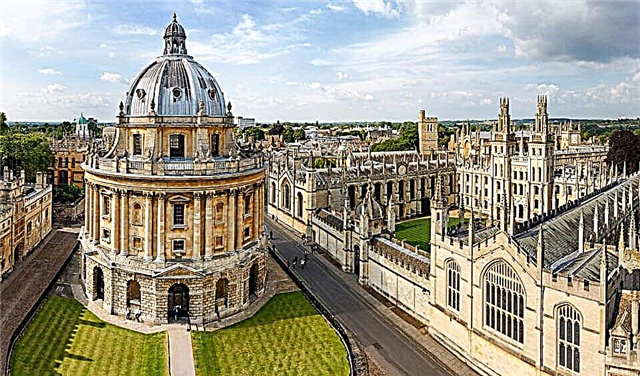
Another student city in the northwest, which is included in the list of the best universities in the world, whose natives were Margaret Thatcher, Ivan Turgenev, Anna Akhmatova, representatives of royal dynasties, the modern government of England and businessmen. Oxford is famous for its individual approach to students, so there is one teacher for every four students, developing a special educational program for them. In the 10th century, this city was a strategically important site, and therefore was constantly attacked. Later, a castle was built here, a school and a monastery were founded.
They managed to survive to our time and now they serve as a place for a hotel and a museum. During the tour, tourists are shown the Carfax Tower, the Church of the Virgin Mary, the Museum of Modern Art, paleontological, zoological, as well as an art gallery with works by Raphael, Rembrandt, Leonardo da Vinci and other artists, and Christ Church College, where pictures of one of the films were taken about Harry Potter. It will take a whole day to see all the university institutions, attractions and gardens.
Windsor

The largest castle in the world is located in Berkshire. It is the royal residence, receptions are held here and important documents are signed. During the excursion, by the way, you can learn about the presence of the queen in the castle: if there is one, a flag flies on the Round Tower, and vice versa. But, of course, they are not allowed into its part of the palace, and a whole detachment of guards in red suits monitors the discipline. At the beginning of the 11th century, William the Conqueror decided to build on this place observation points along the Thames to identify the advancing enemy troops, then more reliable fortifications were erected around them, and by the 14th century, under the reign of Charles II, a whole castle appeared.
Interestingly, the modern palace has managed to preserve all architectural styles from romantic to neo-Gothic. Thanks to the audio guide in different languages, it is quite possible to understand the history of Windors Castle and not miss anything: a dollhouse showing the life of monarchs in the 19th and 20th centuries, art galleries, the Throne and Dining Rooms, St. George's Chapel with the burials of kings, etc.
Stonehenge and Bath

The most popular place among travelers, for the sake of which people come from the farthest corners of the planet. More than 140 thousand years ago, 82 giant boulders formed a circle, which today is interpreted as a way of reckoning according to one version, and a place of worship of the gods according to another. But the method by which these stones were transferred here remains a mystery, because the weight of one stone is 25 tons, which is beyond the power of even a few dozen of the most powerful people.
All the guesses of this miracle will be described in detail in the first half of the excursion, and in the second you will be expected by a picturesque town on a hilly terrain - Bath City. There are Roman thermal springs, a botanical garden, an art gallery and other attractions. The picturesque streets of the city are located on the water, for which it deserves comparison with Venice.

